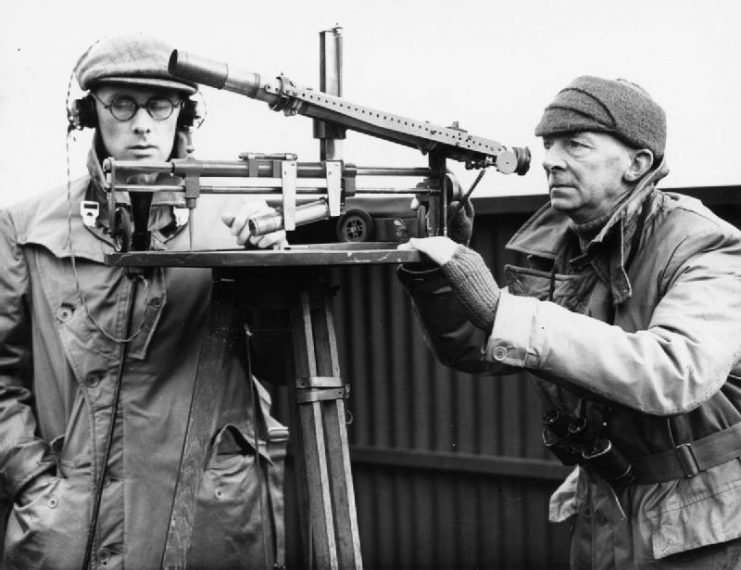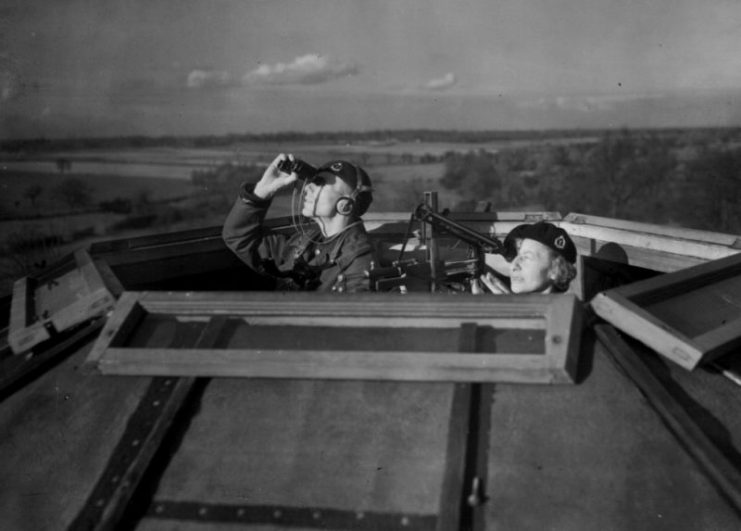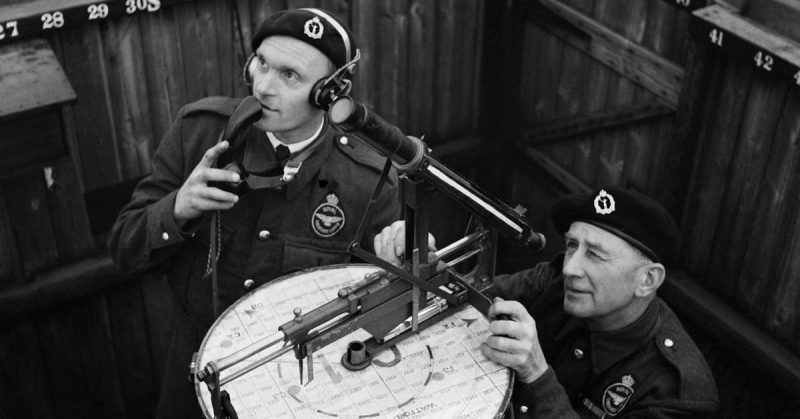Jack Kelway of the Royal Observer Corps, was killed by a German aircraft in WWII. He was finally honored on October 11, 2017, when 28 people gathered in Newport cemetery to give him a military-style funeral complete with headstone.
Vicar of Scampton, the Reverend Sue Deacon, blessed the new headstone. Kelway’s nephew, John, read scripture from the Bible. Peter Jex of the ROC Association read the Exhortation and Edwina Holden, the ROC Association’s National Heritage Officer, read the Kohima. The group then observed two minutes of silence.
At the ceremony for Kelway, the Lincolnshire Special Constabulary; the Officer Commanding Lincolnshire Air Training Corps; and the Commanding Officer of 204 Squadron City of Lincoln Air Training Corps paid their respects. A member of the Lincolnshire Fire and Rescue Band played the Last Post, Reveille and also accompanied the National Anthem.
Bill Warwick, who served in the ROC from 1951 to 1959, had noticed that Kelway’s grave was uncared for. He began a fund-raising campaign which raised £1,130 over the course of a year to buy a new headstone.

Warwick said they bought the headstone for Jack’s daughter Christine. She had been a young girl when her father did not return home from work on the night he was killed. Christine can now have peace of mind that her father has a proper memorial.
As the war was nearing its end, the Luftwaffe began a new desperate attempt to return momentum to the Axis powers. The plan was known as Operation Gisella. On March 4, between 150 and 200 German fighter planes attacked 500 Allied bombers that were returning to bases in Yorkshire, Lincolnshire, and Norfolk.
Kelway was a civilian serving as a Special Constable in the Royal Observer Corps at the time. He was heading to his observation post at Hackthorn, driving through Lincolnshire in east central England on March 4, 1945, when a German Junkers JU88 attacked, coming in at ground level.
The plane was flown by Feldwebel Heinrich Conze, who had just shot down a 460 RAAF Squadron Lancaster at Langworth. He and his crew were now on the hunt for targets on the ground. But Conze miscalculated, flew too low and hit some telegraph wires. The impact sent the plane towards the ground, where it hit Kelway’s car and sent it flying across several fields.

Kelway worked as a supervisor at the Bardney Sugar Factory. He had a wife, a daughter, and two young sons. After his death, the family moved to Australia. His daughter, Christine, still lives there.
The ROC was founded in 1925 as a civil defense organization. It was known as the “Eyes and Ears” of the Royal Air Force. Staffed mainly by volunteers, the ROC members wore RAF-styled uniforms and received training from full-time RAF officers. They were especially important during the Battle of Britain in WWII. During the Cold War, they monitored, recorded and appraised nuclear fallout in case of a nuclear attack on the UK.
Edwina Holden MBE said the new headstone replaced a curb surround, which had previously made it impossible for cemetery staff to mow the grass on the grave. It will now be appropriately maintained, along with regular maintenance of the surrounding area. The Air Training Corps offered to attend to the upkeep the stone, and their offer was gratefully accepted.
Warwick was recognized for his initiative and the work he put into researching Kelway’s life, raising funds and planning the funeral ceremony.
Kelway’s nephew, John, said he believed his uncle would have been proud.
